Get PeakVisor App
Sign In
Search by GPS coordinates
- Latitude
- ° ' ''
- Longitude
- ° ' ''
- Units of Length

Yes
Cancel
Share ×

Scan the QR code and open PeakVisor on your phone
❤ Wishlist ×
Choose
Delete
The Brijuni Islands are a place of outstanding natural beauty and historical value. Protected as a National park within the Adriatic Sea, these islands belong to Croatia. There are nine official ‘peaks’ within Brijuni Islands National Park. Vela Straža (55 m / 180 ft) is the highest and most prominent point. Visitors can take guided tours of the islands, rent bicycles, or explore the park's hiking trails. There are also several beaches on the islands where visitors can swim and sunbathe. The national park is accessible by ferry from the nearby town of Fažana.
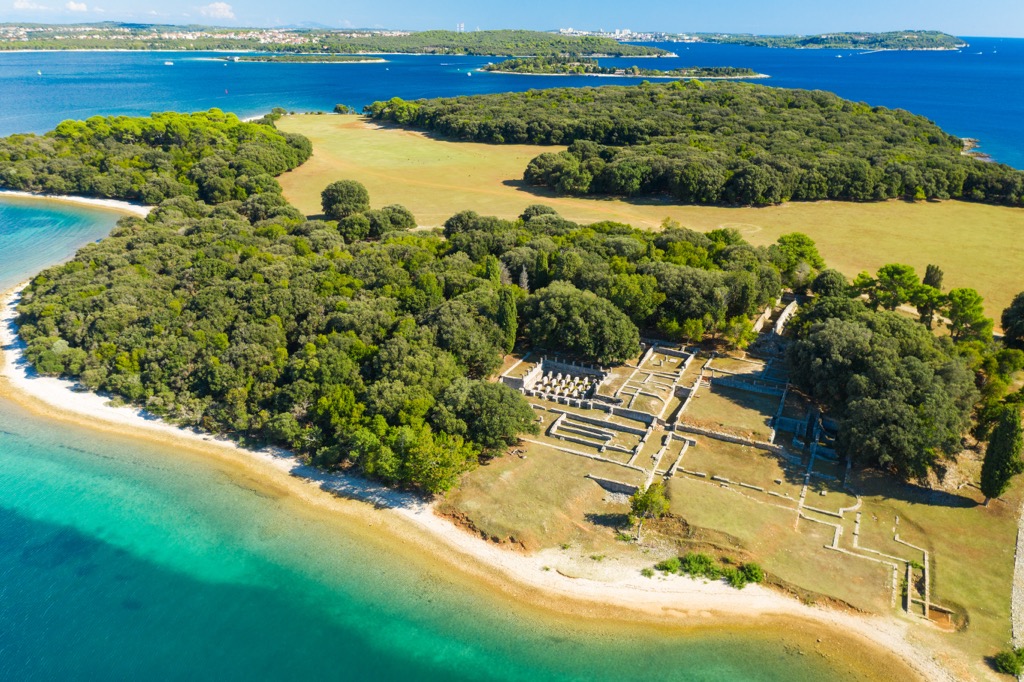
Brijuni Islands National Park is a group of fourteen small islands located off the west coast of the Istrian peninsula in Croatia. Initially established in 1983, the park now covers an area of about 33 sq. km (20 mi). The islands are known for their stunning natural beauty, diverse flora and fauna, and rich cultural and historical heritage.
Brijuni National Park spans over 3,395 ha (8,389 acres). Of the total area, 2,651.7 ha (6,550 acres) is the sea, while 743.30 ha (1,835 ha) is the landmass. Its coastline is 46.8 km (29 mi) long.
The islands were once the summer residence of former Yugoslav President Josip Broz Tito, who hosted numerous world leaders and celebrities during his reign. The islands still feature many remnants of Tito's rule, including a safari park, a collection of exotic plants, and a memorial to Tito himself.

The islands are named Veliki Brijun, Mali Brijun, Sv. Marko, Gaz, Okrugljak, Supin, Supinić, Galija, Grunj Vanga (Krasnica), Pusti otok (Madona), Vrsar, Sv. Jerolim and Kozada. The largest, Veli Brijun, is approximately 5.6 sq. (3.6 mi) km in size, while the smallest is just a few hundred meters wide.
Gentle slopes and hills crisscross the islands. The landscape is characterized by dense Mediterranean vegetation, including pine forests, olive groves, and vineyards. The coastline around Brijuni National Park tends to be flat, mostly with rocks and stones. Several coves offer easy access to beaches.
The surrounding waters of the Brijuni Islands are crystal-clear, and they are home to a diverse array of marine life, migratory birds, and a variety of fish species. The islands also feature several underwater caves and reefs that are popular with divers.
The region's geological history dates back millions of years when the islands formed due to tectonic activity and volcanic eruptions. The bedrock of the Brijuni Islands is limestone and dolomite, minerals formed by the remains of marine organisms that lived in the region millions of years ago. Over time, these rocks were lifted out of the sea by tectonic activity, creating the islands as they exist today.

During the Ice Age, when sea levels were much lower than today, the mainland connected the Brijuni Islands. As the glaciers melted and sea levels rose, the islands gradually separated from the mainland, forming the archipelago we see today.
Over 200 dinosaur footprints are imprinted within islands, offering paleontological evidence of the ancient reptiles that roamed this area around 130-100 million years ago.
While sailing into the port of Veliki Brijun, you may notice a three-toed print in the limestone block, most likely left by a large theropod carnivore. Tourists to the National Park get a fantastic glimpse of the past through dinosaur tracks at several sites, including Veliki Brijun, Vanga, Galija, and Vrsar.
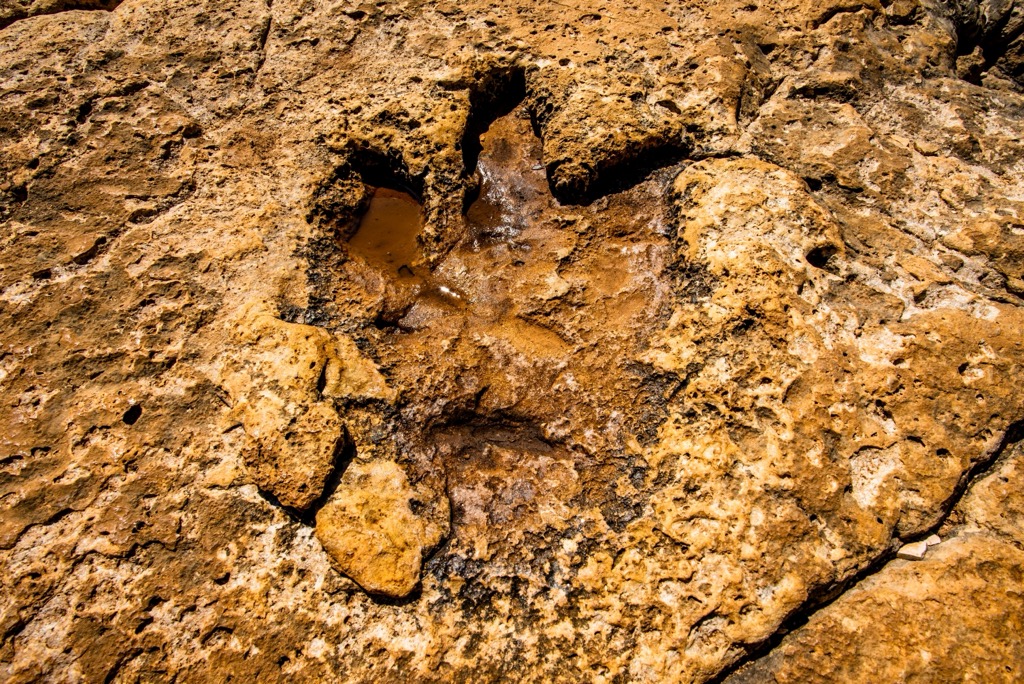
These are the highest points inside Brijuni Islands National Park:
Brijuni's climate is typically Mediterranean, with a nice balance of sunshine, heat, and humidity. Throughout human presence on the island, this coast of the Adriatic has been drastically transformed. This transformation has allowed locals to turn the area into a park composed of spacious grassland, creating an impressive landscape.
Brijuni is a Mediterranean island with all the region's typical ecological attributes. Situated in the Mediterranean phytogeographical zone, it has an impressive range of flora with distinct Mediterranean features.
Croatia’s islands are home to critically endangered plant species such as horned poppy, wild cucumber, and certain grass species. In addition, visitors can spot patches of ancient holm oak forests on Veliki Brijun and Mali Brijun islands. Holm oak and bay laurel forests are particularly notable in eastern Veliki Brijun. It is difficult to find such extensive integral spaces with merged holm oak stands and bay laurel trees anywhere else on the Croatian coast.
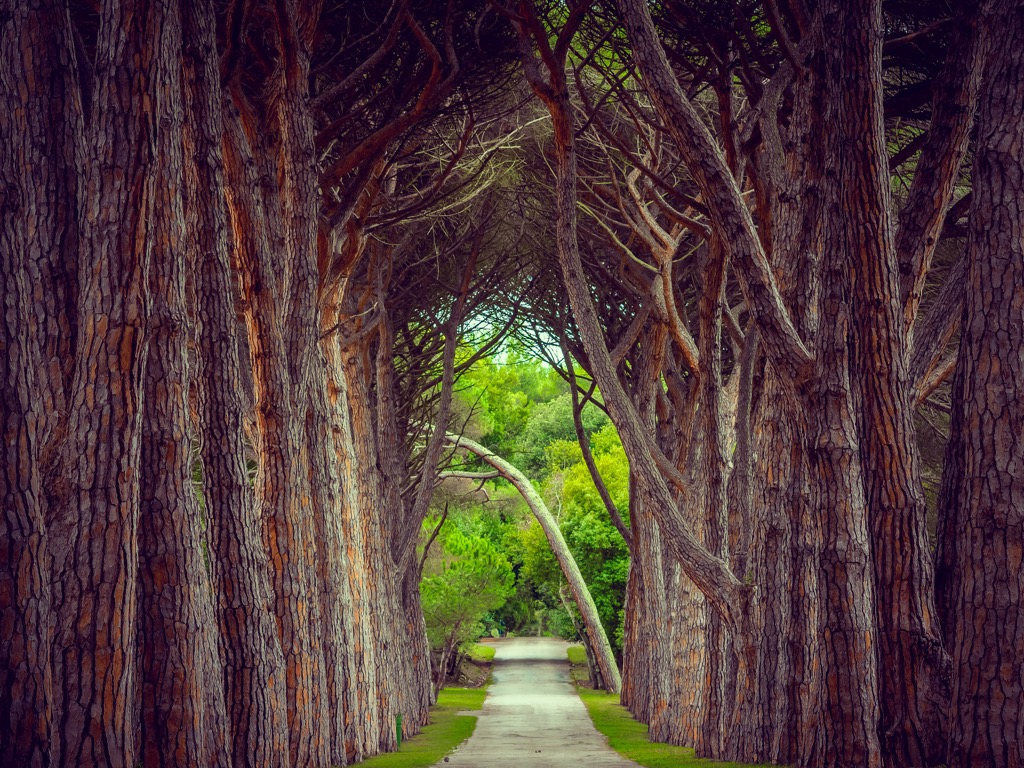
Macchia is a staple on most of the islands. The gorgeous macchia, standing up to 8 m (26 ft) tall and thick enough to block out sunlight, thrives on Peneda's peninsula (on Veliki Brijun). Vanga and Mali Brijun have some of Croatia's best-preserved macchia.
Brijuni National Park is a haven for wildlife with its many species, with its unique microclimate creates the perfect living conditions for native and introduced animals. These include fallow deer, squirrels, rabbits, and various birds like the sandwich tern, red-throated loon, heron, and western marsh harrier - all within one brief stroll. Besides indigenous species, some exotic species inhabit the Brijuni archipelago, serving as a testament to the island's intriguing history.
As far back as 1910, a zoo was established on Veliki Brijun Island and acted as an acclimatization center for animals from tropical climates. The northern part of Veliki Brijun Island boasts a Safari Park established in 1978. Many exotic herbivores gifted to the then-President Josip Broz Tito came to inhabit the park. Visitors may spot zebras, llamas, and a she-elephant from India named Lanka.
The depths and shadows of the ocean provide a habitat for coraligenic and precoraligenic communities, consisting primarily of green and red algae, along with sponges, polychaetes, tunicates, moss animals, and other creatures. These colonies are especially abundant in crevices and rare underwater caves.
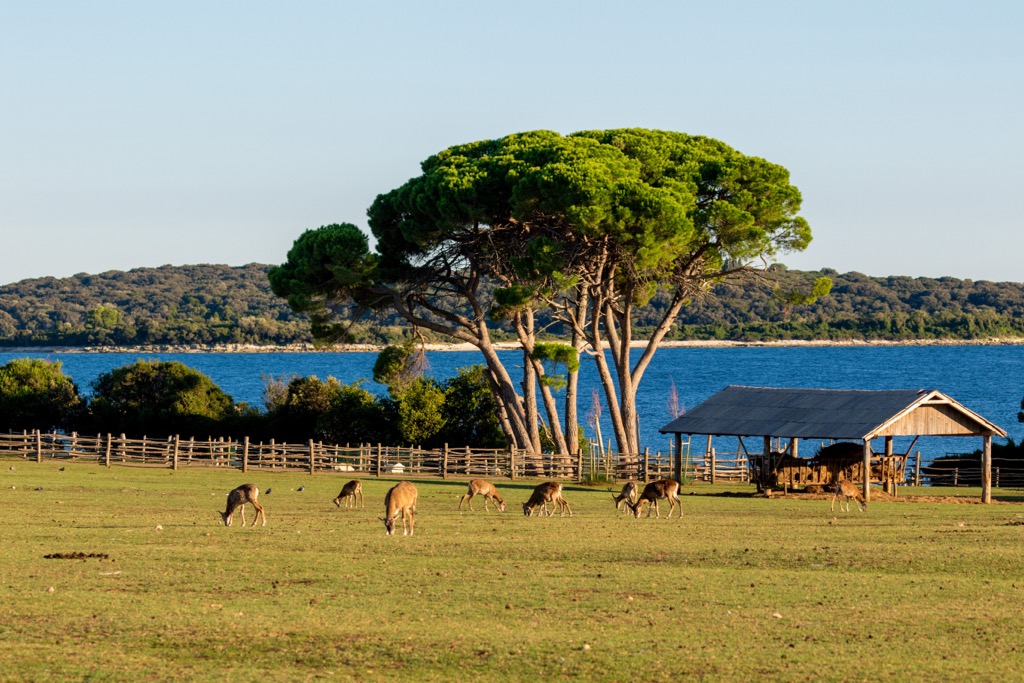
Common inhabitants in this part of the sea include urchins, brittle stars, and sea stars, making it a unique underwater ecosystem. Brijuni's underwater world is the habitat of Posidonia oceanica meadows, more commonly known as “seagrass.” This species is unique to the Mediterranean, and its meadowlands are among the most critical habitats in this coastal region.
Seagrass meadows are vital for the well-being of marine ecosystems due to their habitat for various sea organisms. They also produce oxygen, which has led to them being nicknamed 'the lungs of the sea.'
The Mediterranean Garden of Brijuni adds to the beauty of the National Park and covers a total area of 17,000 sq. m (55,774 sq. ft). Paul Kupelwieser and Alois Zuffar have contributed significantly to the modern Mediterranean gardens in Veliki Brijun. They have seamlessly mixed local and exotic plants into the landscape, creating a unique and visually beautiful experience. It’s a stunning creation that perfectly complements other cultural, historical, and natural attractions of the park. About 170 species of local and exotic plants are on display in this jewel of Brijuni.
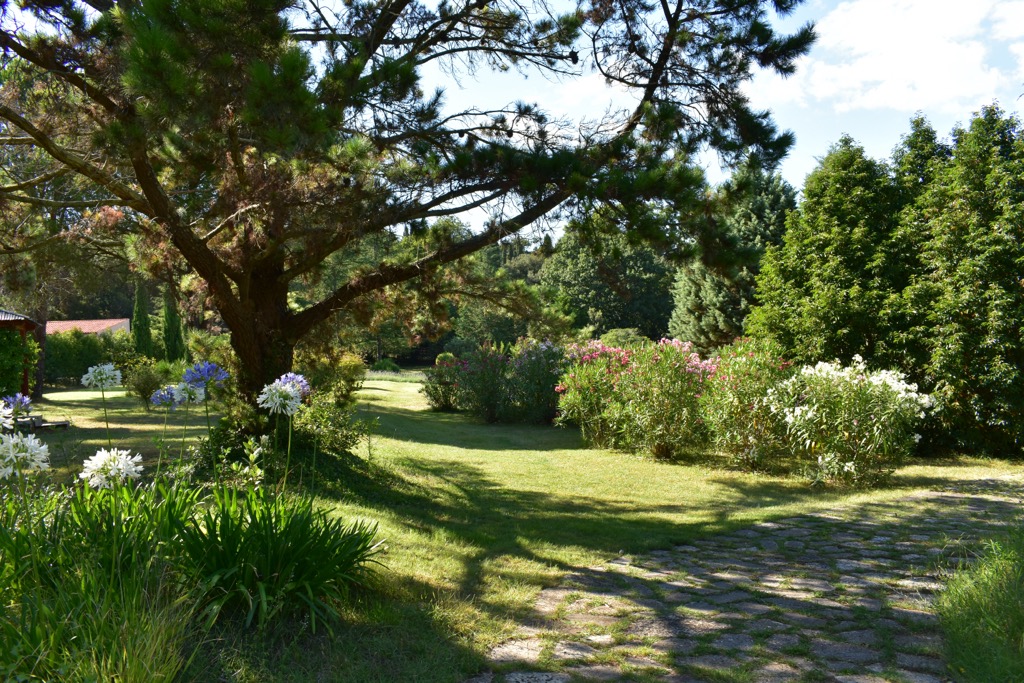
Romans couldn't help but marvel at the beauty of Verige Bay on Veliki Brijun Island. Many archaeological traces remain from Roman habitation, including the promenade, temples, baths, and fishpond.
It was an ideal spot for relaxation and leisure time. Unsurprisingly, the Romans selected this villa to be an imperial residence of Emperor Vespasian. The area has undergone several transformations throughout the ages due to changes in dynasties and inhabitants.
During the Venetian rule, locals extracted salt and stone from the islands. However, by the end of the eighteenth century, residents had almost completely deserted the islands. People would occasionally come to this archipelago, mainly to cut down trees.
Due to its strategic significance, the Austrians constructed fortifications in Pula a century later. They established meaningful associations with Brijuni and helped revive its touristic atmosphere and laid-back way of life. In 1893, Paul Kupelwieser, the Austrian industrialist who ran a steel mill in Moravia, envisioned tourism on the islands. He purchased various islands inside the Brijuni archipelago to bring his dream to life and sparked a tourism revival.

Within 20 years, there were over 300 rooms on Veliki Brijun island. Furthermore, the island was equipped with water, postal, and phone services and had several pathways and promenades for visitors to explore. To provide their guests with the ultimate luxury experience, the local hotels opened heated swimming pools, casinos, sports courses, and even horse stables. The industry brought wine from the best home vineyards, olives from the Brijuni groves, dairy products, and gourmet cheeses from island pastures.
The period from 1910 to 1914 saw the booming of Brioni Insel-Zeitung, a newspaper solely dedicated to the Brijuni Islands. It focused on medical, cultural, and recreational activities, tourist attractions, and local events, which kept the island alive all year round.
Following the end of World War II in 1949, the Brijuni Islands became designated as a residence for Josip Broz Tito of Yugoslavia. The island underwent extensive renovations and overhauls to repair damage caused by the war. Locals refurbished hotels and parks, helping the island recover quickly from its unfortunate past. The western coast of Veli Brijun Island boasts two luxurious villas: the White Villa of 1953 and the more modern Brijunka Villa.

The stunning beauty of Brijuni and its marine biodiversity were acknowledged in 1983 when the government designated it a National Park. Croatia obtained autonomy in 1991 and established the Brijuni Islands as a Global Conference Centre (Brioni Agreement). Four hotels on the Veliki Brijun Island have opened again, as well as a Safari Park with animals gifted to Tito.
The national park has five separate educational trails and numerous loop trails for walking and hiking, including:
The beautiful trail of Veliki Brijun starts from the port. It passes along the whole perimeter of the island, unveiling the spectacular views, natural features, and historical landmarks of the biggest island in Brijuni National Park.
From the Safari Park, you can journey along the island's west side toward Jezero bay. On your way back, enjoy a scenic walk along the coves of Javorika and Soline. The loop trail is the longest hike in the park at 13 km (8 mi) and an elevation gain of 150 m (492 ft).
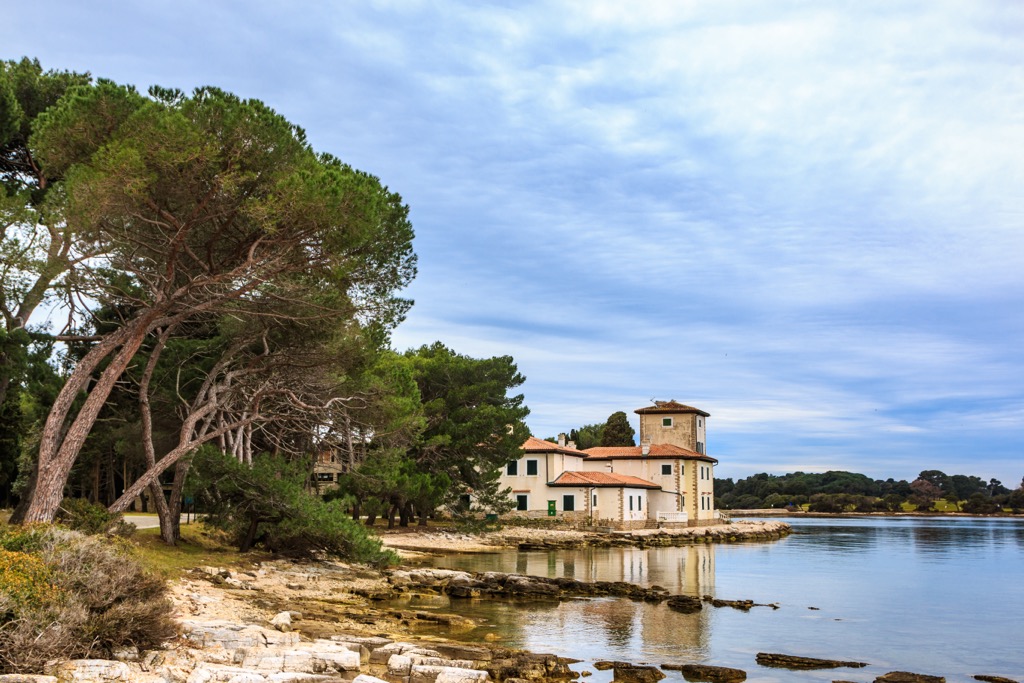
Visitors to Veliki Brijun can take a memorable journey through this picturesque path starting from the port. As you pass by the former steam bath and go along Jurin's and Franin's farm buildings, you'll soon come across a unique bridge that leads to one of Europe's earliest golf courses.
Stroll on the path and watch groups of axis deer, fallow deer, and mouflon move freely. Continue the journey to the Safari Park, where you can observe exotic herbivores like Lanka, an Indian elephant, llamas, zebras, sacred cows from India, and ostriches.
Wander through the woods and beyond to Verige Bay, past ancient ruins of the Temple of Venus and a Roman country villa from the first century. The route carries on along to Saluga Bay, with its stunning beachfront. This hike is 10 km (6.2 mi) long and takes you from the Briuni Harbor through Safari Park, towards Verige Bay in the northern part of Veliki Brijun Island and back.
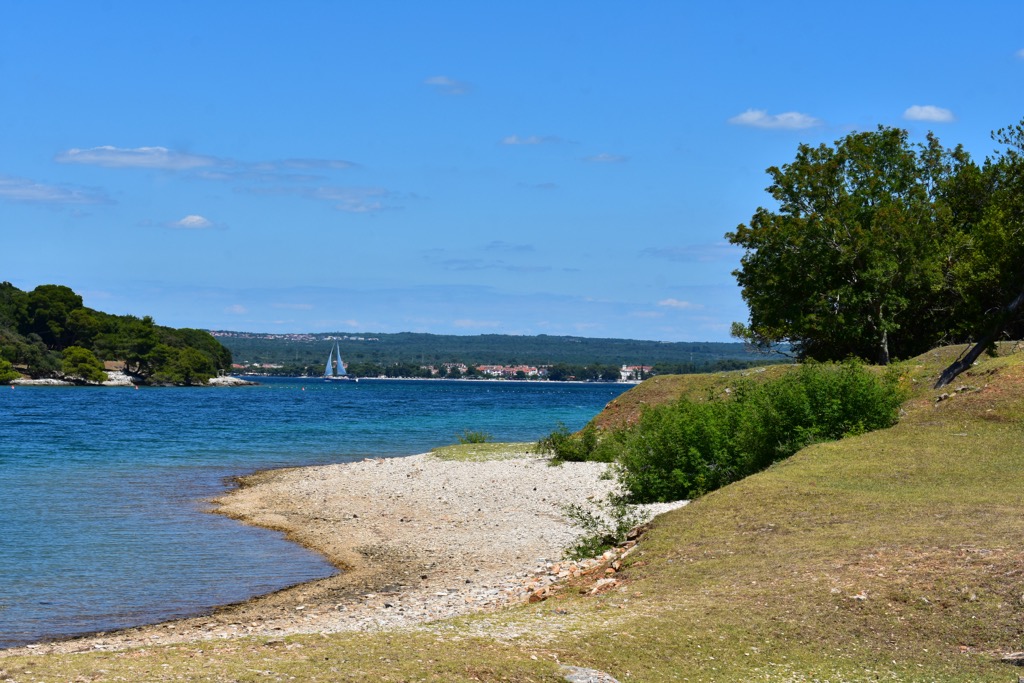
This scenic and tranquil trail offers tourists an opportunity to learn about the cultural and historical aspects of the region. There are 25 informative boards located along this coast that provide a wealth of knowledge.
The 1.3 km (0.8 mi) trail is suitable for many physical abilities and starts at Javorica Bay before winding through Cape Ploče, Cape Kozlac, and eventually Rankun Bay. Due to its accessible nature and short length, it has become a popular tourist spot.
These are the most significant cities near Brijuni Islands:
Pula, Croatia, is a beautiful coastal city on the Istrian Peninsula. It is known for its stunning beaches, crystal clear waters, and vibrant culture. It is also home to some of the most spectacular Roman ruins in the world, including the famous Arena of Pula.
The city itself is quite small, with a population of just over 56,000 people. Despite its size, there are plenty of accommodation options available. From luxury resorts to budget-friendly hostels and apartments, you can find something that suits your needs and budget.
Pula also hosts several festivals throughout the year that attract visitors from all over the world. The most popular ones include the Pula Film Festival and Arena Spectaculum.

Rovinj, Croatia, is a beautiful coastal town on the Istrian Peninsula. It is known for its picturesque harbor, cobblestone streets, and stunning views of the Adriatic Sea.
With just over 14,000 people, it is one of the smaller towns in Croatia, but it still offers plenty to do and see. From luxury hotels to quaint bed and breakfasts, plenty of accommodation options are available for visitors.
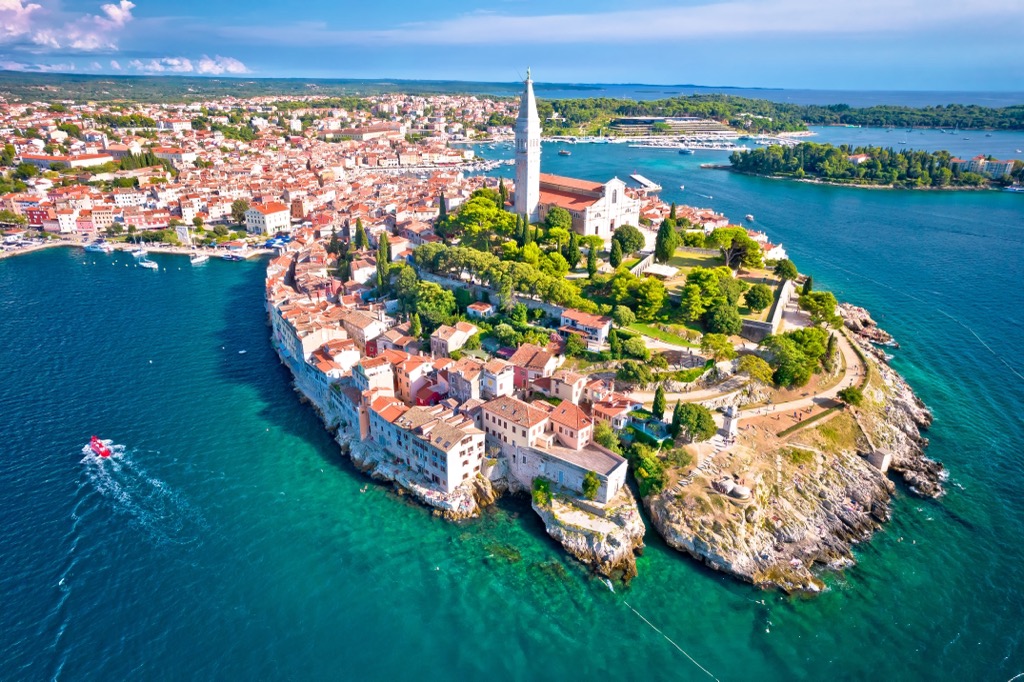
Rijeka, Croatia, is a beautiful port city on the Adriatic Sea. It is known for its stunning architecture, vibrant culture, and rich history. With a population of around 110,000, it is Croatia's third-largest city.
Rijeka offers various accommodation options to suit all budgets and tastes. From luxurious hotels to budget-friendly hostels, there is something for everyone here. The city also hosts several festivals, such as the Rijeka Carnival and Rijeka Summer Festival, each attracting thousands of visitors.

Explore Brijuni Islands National Park with the PeakVisor 3D Map and identify its summits.








